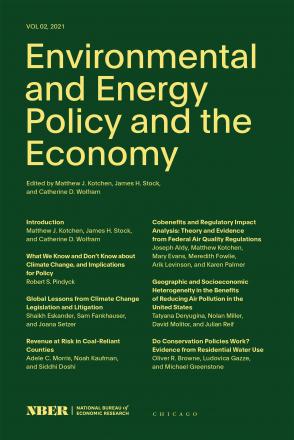Do Conservation Policies Work? Evidence from Residential Water Use

You may be able to download this chapter for free via the Document Object Identifier.
In response to the historic 2011–2017 California drought, local governments enacted a raft of conservation policies and little is known about which ones explain the sharp decline in residential water consumption. To answer this question, we use a novel data set of hourly water consumption data for over 82,300 households in Fresno, California where water consumption declined by nearly a third and have three main findings. First, we estimate the price elasticity of demand for water to be 0.16 for marginal rates and 0.39 for average rates. Second, reducing the number of days where outdoor watering is allowable from 3 to 2 substantially decreases water use, despite the availability of opportunities to substitute between permitted and non-permitted hours, days, and seasons. Third, "bully pulpit'' pronouncements about the water crisis increased public awareness of drought conditions but did not contribute to water savings. Overall, higher water prices explain 40–44 percent of the changes in residential water use observed during our sample period in Fresno and reductions in the number of days when outdoor watering is allowable explain 45–51 percent of these changes. However, the absence of experimental or quasi-experimental variation in these policies means that we interpret this associational evidence cautiously.


